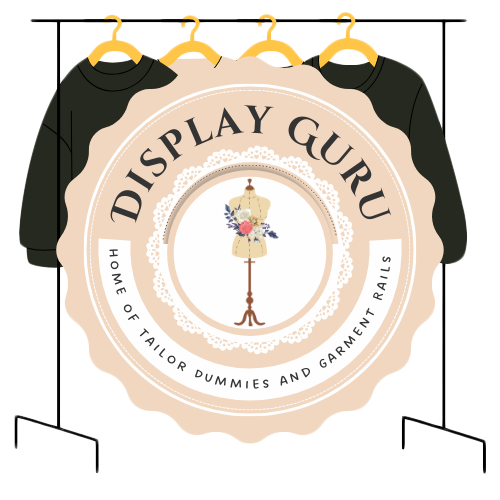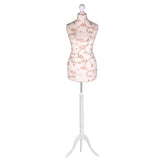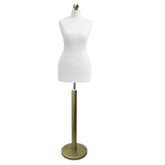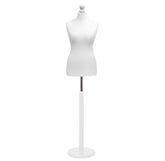Choosing the Perfect Dummy for Clothes
A dummy for clothes is essentially a three-dimensional torso that serves as a stand-in for the human body. For anyone involved in making, altering, or selling clothing—from designers and tailors to high-street retailers—it's an indispensable tool for fitting, creating, and showcasing garments. Far more than just a stand, it's a silent partner, helping to translate a flat design into wearable art and showing customers exactly how a piece of clothing is meant to look and drape.
Why a Clothes Dummy Is Your Secret Weapon
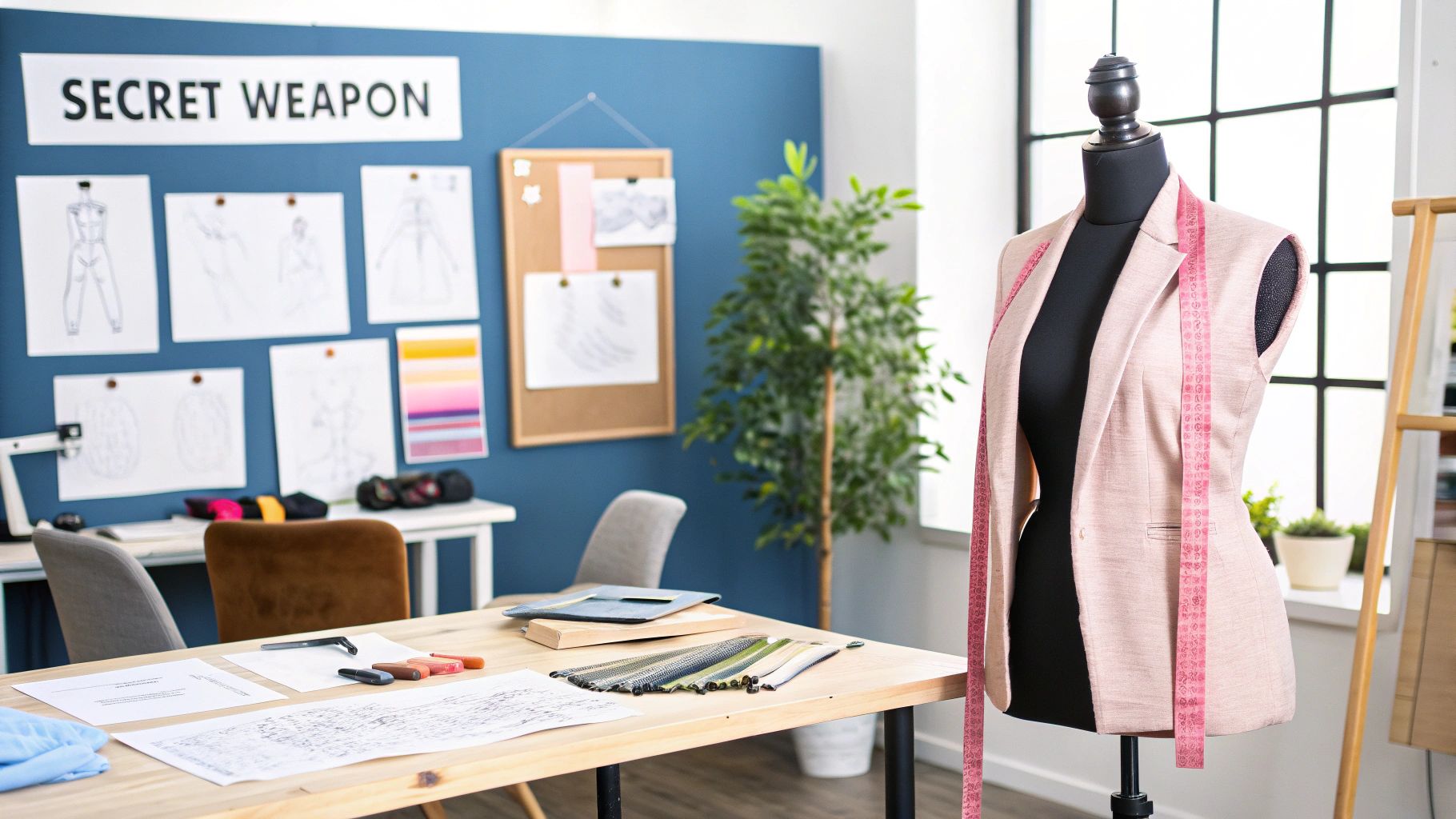
It's best to think of a clothes dummy not as a static object, but as the bridge between imagination and reality. For anyone serious about fashion, whether you're a sewing enthusiast working from home or a major retailer, this tool is fundamental. It brings clothing to life in a way a flat pattern or a simple hanger never could.
Without that crucial three-dimensional form, a designer is practically working with one hand tied behind their back. They're left guessing how a certain fabric will hang, how a seam will curve gracefully around a shoulder, or precisely where a dart needs to go to create that perfect silhouette. The dummy takes the guesswork out of the equation, offering a reliable body double that never fidgets or complains during long fitting sessions.
From Concept to Creation
For designers and dressmakers, the dummy is the very first audience. It’s the starting point where a sketch pinned to an inspiration board begins its transformation into a real, tangible garment. By draping fabric directly onto the form, a creator can see their vision unfold in real-time, allowing for instant adjustments and often sparking new creative ideas along the way. This hands-on process is absolutely vital for achieving a professional finish.
A good dress form makes several things possible:
- Accurate Fitting: It provides a standard, consistent set of measurements to ensure your garments are tailored correctly every time.
- Precision Draping: You can literally sculpt fabric on the form to experiment and create entirely unique patterns and designs.
- Flawless Finishing: It’s perfect for checking the balance, hang, and overall appearance of a piece before it’s ever tried on.
The Silent Salesperson in Retail
In a shop setting, a clothes dummy shifts from a creation tool to a powerful sales engine. A well-styled mannequin does so much more than just hold an outfit; it tells a story. It doesn’t just show a potential customer a shirt, but how to wear that shirt. By presenting complete, curated looks, dummies inspire shoppers and reveal the true potential of your merchandise. Knowing the basics of presentation is crucial, and you can learn more about how to dress a mannequin to truly maximise its impact.
A well-dressed dummy is your store's most effective visual merchandiser. It doesn't just display clothes—it sells a lifestyle, an aspiration, and a complete look, often convincing a customer before they even touch the fabric.
Decoding the Different Types of Dummies
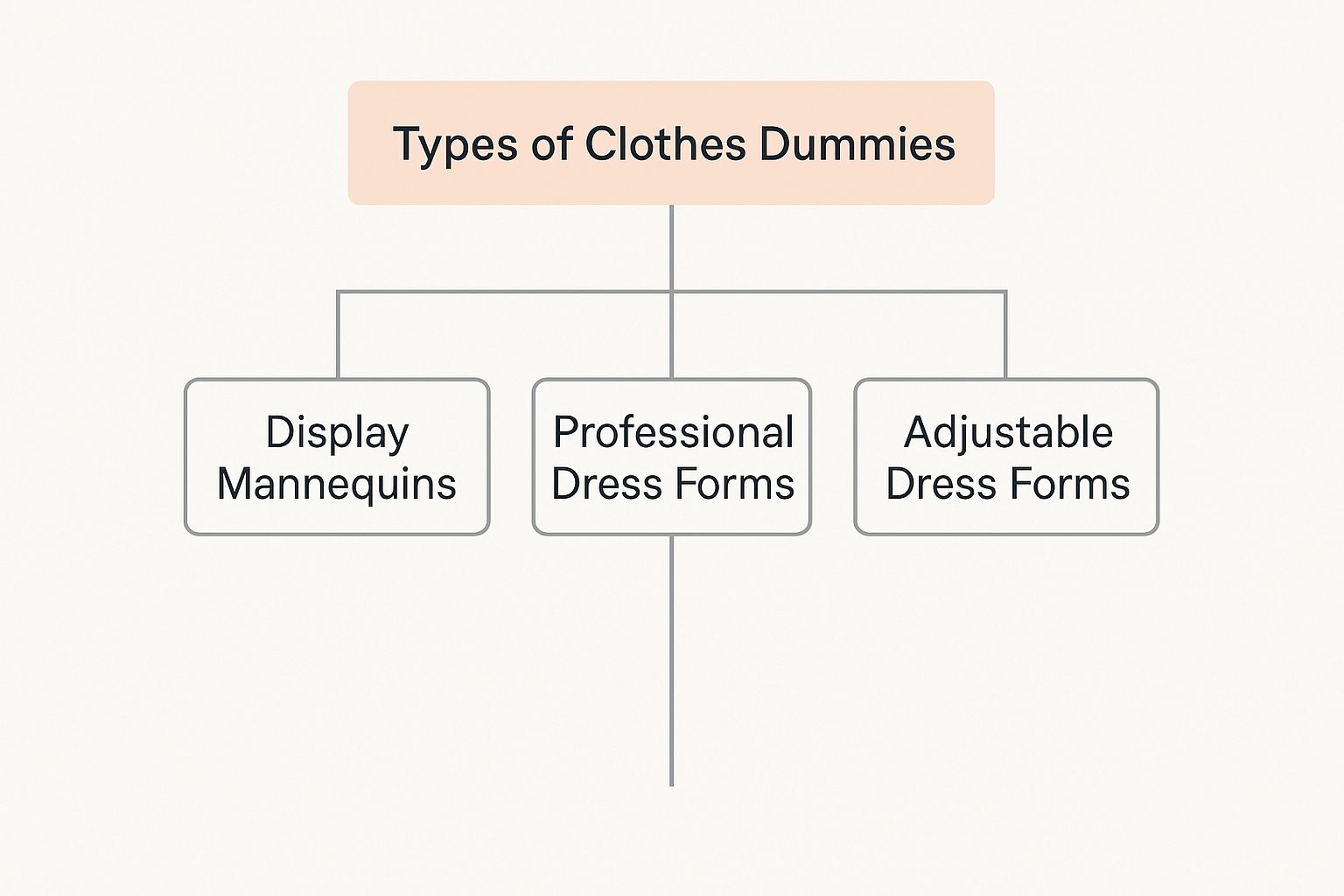
This infographic gives you a quick visual breakdown of the main categories of clothes dummies, which is a great starting point for figuring out what you really need. Getting to grips with these core types is the first step towards finding the perfect partner for your design work or retail space.
You'll quickly learn that not all dummies are the same. Each type is built for a specific job, a bit like the different knives in a chef's kitchen. Picking the right one boils down to what you’re trying to achieve, whether that's crafting a bespoke wedding dress from scratch or stopping a customer in their tracks with a killer window display.
Display Mannequins: The Storytellers of Retail
Think of display mannequins as the silent ambassadors of the fashion world. They are the storytellers. Usually made from tough materials like fibreglass or plastic, their sole purpose is to show off finished clothes and make them look irresistible. They come in every imaginable pose, colour, and style—from ultra-realistic figures that could be mistaken for people to sleek, abstract forms that just hint at the human shape.
Their job is entirely visual. A dynamic, running pose instantly brings sportswear to life, while a poised, elegant stance is the perfect match for high-end evening wear. These mannequins are fundamental tools for building a brand’s atmosphere and telling a story in a physical shop. For more ideas on this, check out our guide on using effective mannequins for shops.
Professional Dress Forms: The Designer's Canvas
The professional dress form, on the other hand, is a tool for creation, not just for show. Often covered in a tough, pinnable fabric like linen over a solid core, these are the true workhorses of any design studio. They are built to precise industry-standard measurements, acting as a reliable stand-in for a "typical" body shape when you're making patterns.
The most critical feature here is its pinnable surface. This is what allows designers and tailors to pin fabric directly onto the form. It’s absolutely essential for draping, which is the art of creating a garment pattern by sculpting fabric onto a three-dimensional model. For any serious tailor, fashion designer, or student, this type of dummy is non-negotiable.
A professional dress form is less about looking human and more about being a precise, reliable tool. It is the anatomical reference that ensures a garment's structure, balance, and fit are technically perfect before a single stitch is sewn on a machine.
Adjustable Dress Forms: The Home Sewer's Ally
For hobbyists, home sewers, or anyone needing to fit clothes for lots of different body shapes, the adjustable dress form is a game-changer. These dummies have a series of dials—typically at the bust, waist, and hips—that allow you to expand or shrink sections of the torso. This means you can mimic a person’s specific measurements with a pretty good degree of accuracy.
They might not be as heavy-duty as the professional models, but their sheer flexibility makes them a brilliant and affordable option for personal projects. An adjustable form lets you see exactly how a garment will hang and fit on a specific body without you having to constantly try it on yourself. It's a massive time and frustration saver. You can find them in all sorts of configurations, from petite and plus-sized to specialised "bifurcated" models with legs for fitting trousers.
Must-Have Features in a Quality Dummy
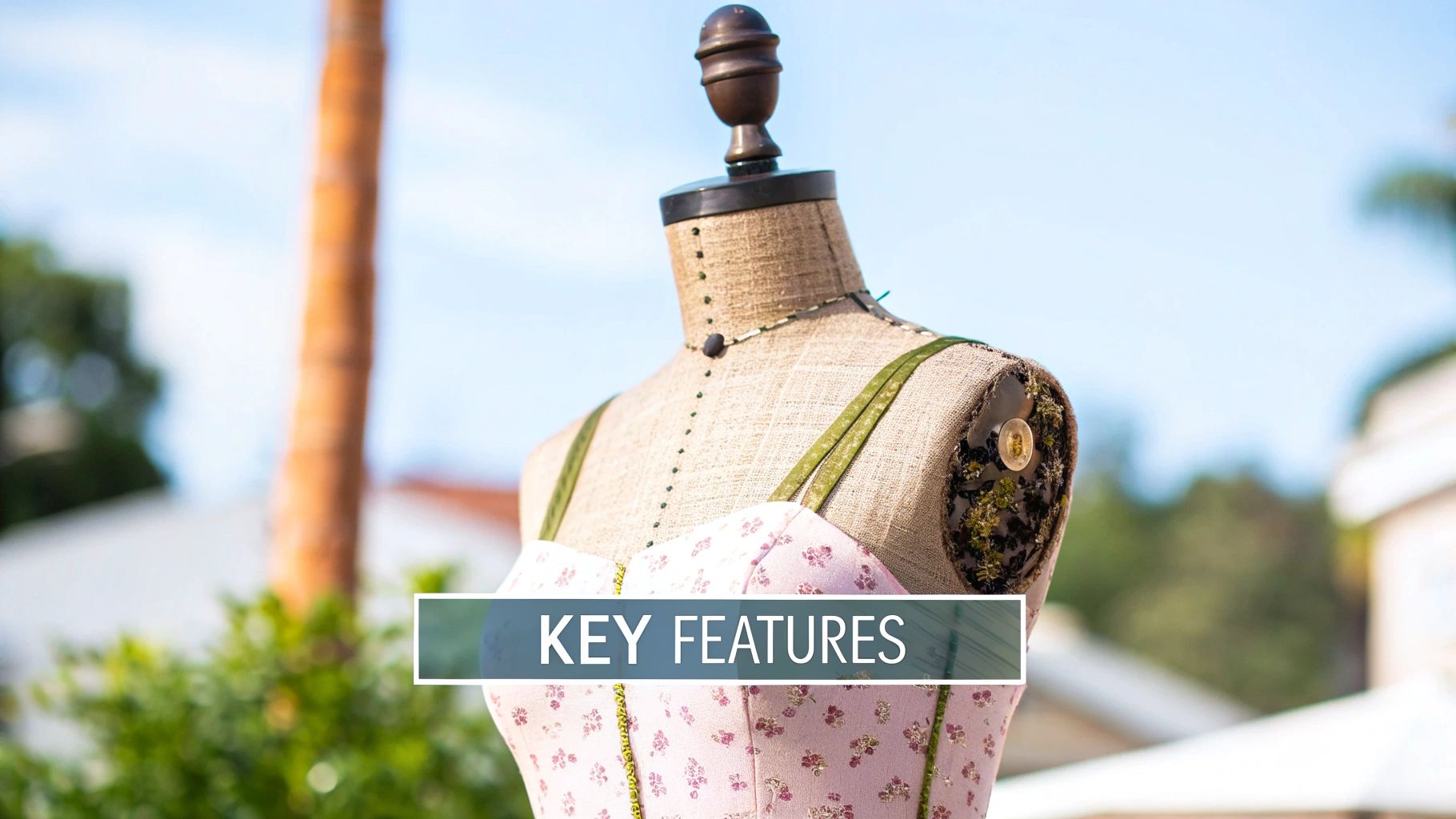
Knowing what separates a superb clothes dummy from a merely adequate one is the secret to making a smart investment. It’s not just about the price, but about the specific features that will genuinely support your work, whether you're deep into intricate tailoring or setting up an eye-catching shop display. The right details make your process a breeze, while the wrong ones just lead to constant frustration.
Think of it like buying any specialist tool—you have to look beyond the surface. The materials, the stability, and the functional design are what really determine how valuable and long-lasting your dummy will be.
Materials and Construction Matter
The body of the dummy is its heart, and the material it's made from dictates its entire purpose. For visual merchandising, fibreglass is a popular choice. It's tough, rigid, and can be sculpted into all sorts of realistic or abstract shapes. This makes it perfect for showing off finished clothes but useless for actually making them.
For sewing and design, you're looking for something else entirely. A dummy with a dense polystyrene or foam core, covered in a sturdy fabric like linen or jersey, is the gold standard. This combination gives you two crucial advantages:
- A Lightweight Body: This makes it easy to shift around your studio or workspace.
- A Pinnable Surface: The foam and fabric combo lets you stick pins in without a fight and without damaging the form.
This "pinnability" is absolutely non-negotiable for anyone serious about draping fabric, making patterns, or fitting garments. It's what allows you to sculpt material directly onto the form, secure your pattern pieces, and make those tiny, precise adjustments with total confidence. A dummy you can't pin into is, for all intents and purposes, just a display piece.
Adjustability and a Sturdy Foundation
For home sewers or designers working with a range of body shapes, the ability to adjust a dummy’s measurements is a massive plus. Many dummies come with built-in dials that let you expand the bust, waist, and hips to match a specific person. While professional design studios often use fixed-size forms, an adjustable model offers incredible versatility for personal projects.
No matter how well-made the torso is, a dummy is only as good as its base. A wobbly, unstable stand isn't just annoying—it can be downright dangerous when you're working with heavy fabrics or a one-of-a-kind garment.
A heavy-duty base is essential, whether it's a classic wooden tripod or a modern metal one on castors for easy movement. It provides the stability you need to work without the constant fear of your dummy tipping over. A secure foundation is vital, and you can learn more about choosing the perfect dress form stand to keep your work properly supported. It’s a small investment that protects both your projects and the dummy itself.
How Dummies Drive Sales in Modern Retail
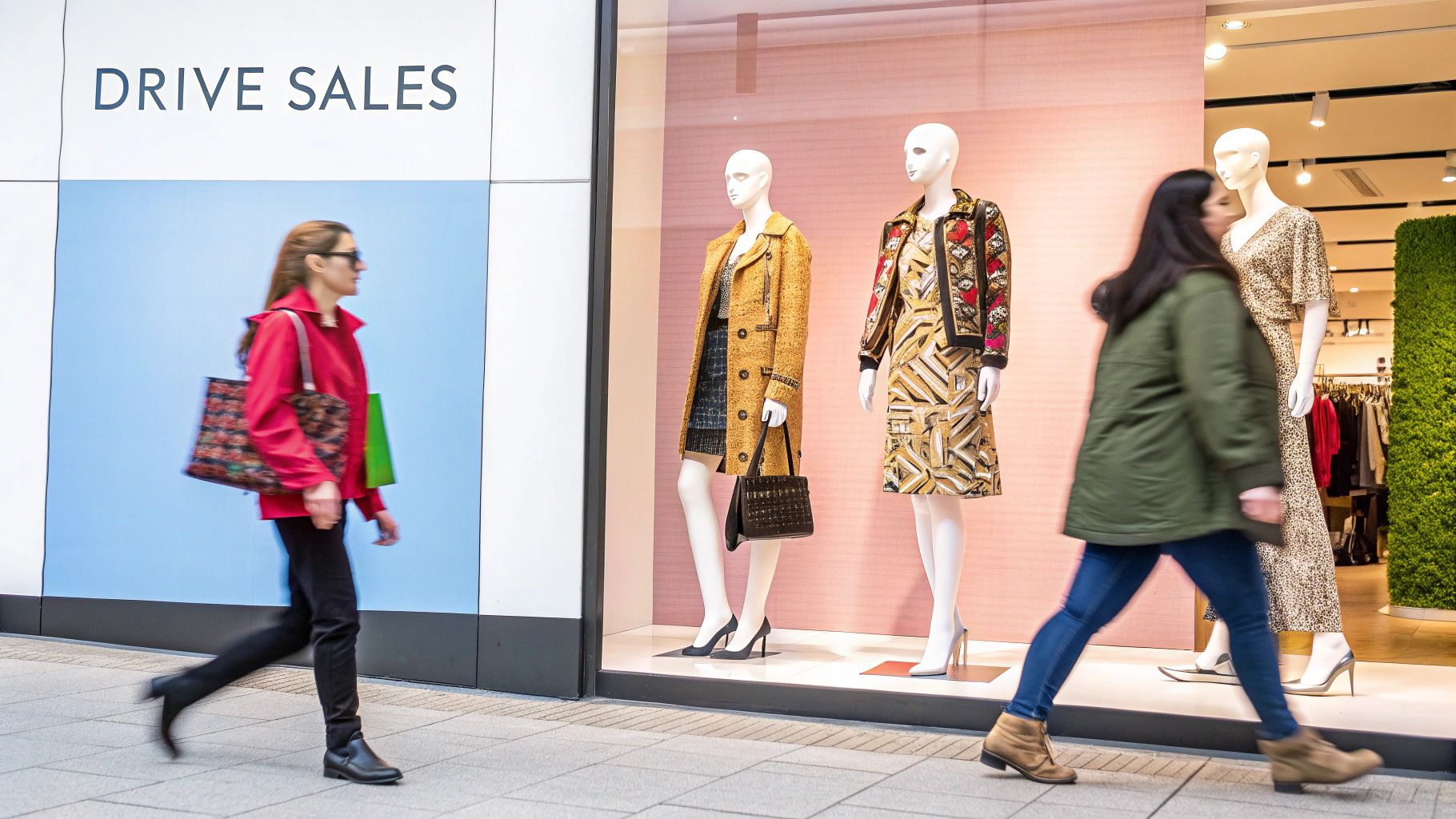
In the competitive world of retail, a dummy for clothes is much more than a simple stand. Think of it as your best silent salesperson, a key tool for visual storytelling that helps customers forge an immediate connection with your products. It’s what transforms a piece of fabric into an aspirational outfit.
A perfectly styled dummy in a shop window can genuinely stop people in their tracks, pulling them inside. Once they're in, well-placed displays guide them through the store, showing off not just single items but entire head-to-toe looks. This is brilliant for helping shoppers see how they can build an outfit, which often nudges up the average sale value.
Bridging the Physical and Digital Storefront
The power of a good dummy for clothes isn't just confined to the shop floor. As retail continues to blend online and in-store experiences, dummies have become essential for creating a consistent brand feel everywhere a customer finds you.
For any successful e-commerce site, high-quality, professional photography of garments on a clean-looking dummy is a must. This method has some clear wins over just showing clothes on a hanger or laid flat:
- Shows the True Fit: It gives shoppers a much better, three-dimensional sense of how a garment actually drapes, hangs, and fits the body.
- Cuts Down on Returns: When customers can accurately picture how an item will look on them, there are fewer nasty surprises when it arrives. That means fewer returns.
- Looks More Professional: Using the same style of dummy photography across your website creates a polished, uniform, and trustworthy look for your entire catalogue.
This visual consistency is especially important in the UK's booming online fashion market. Fashion e-commerce is forecast to grow by 4.6% and hit £21.01 billion, largely thanks to people shopping on their phones. To stand out, a brand’s online shop has to look absolutely spot-on.
A clothes dummy helps answer the most important question on a customer’s mind: "How would that look on me?" By presenting clothing in a realistic and appealing way, it builds confidence and removes one of the biggest hurdles to making a purchase, whether online or in-store.
Maximising Visual Impact
Getting the most out of your dummies is a core part of smart retail; it’s all about creating a space that inspires customers and makes shopping easy. To really boost their effect, think about pairing them with other innovative retail clothing display ideas and solid merchandising techniques.
A winning visual strategy always treats the dummy as the star of a bigger story. By weaving together compelling in-store presentations with sharp, clean e-commerce images, retailers can build a powerful brand narrative that really drives sales. To get your whole look working together, check out our guide on visual merchandising guidelines.
Mastering Fit and Drape on Your Dress Form
Just having a good quality dummy for clothes is one thing, but knowing how to use it is where the real magic happens. This is the moment you turn a static stand into a near-perfect double of a human body, letting you nail the fit and drape of a garment in a way a flat paper pattern simply can't. Think of it as your silent partner, holding the fabric patiently while you pin, tweak, and sculpt.
The first skill to get to grips with is padding. Most standard dress forms are built around idealised, perfectly symmetrical industry measurements. Real bodies, however, are full of unique curves, quirks, and asymmetries. The whole point of padding is to build up the dummy’s shape until it mirrors these individual features precisely.
Padding for a Perfect Match
By padding it out correctly, your dummy for clothes becomes a genuine body double for you or your client. This is the bedrock of bespoke tailoring and absolutely crucial for getting that flawless, made-to-measure fit. It’s all about strategically adding layers of material to mimic specific body contours.
You can do this with a few common materials:
- Foam Pads: You can buy kits with pre-shaped foam pads designed for the bust, hips, tummy, and shoulders.
- Wadding: Polyester or cotton wadding is fantastic for building up larger areas and creating soft, gradual curves.
- A Fitted Cover: Pulling an old, tight-fitting top or a specially made cover over the top holds all the padding in place and gives you a smooth, pinnable surface to work on.
The secret to great padding is to go slowly. Keep checking your measurements against the actual person as you work. You're not trying to create a generic shape; you're replicating every subtle curve and dip for a truly accurate form.
This level of customisation is what makes a dress form so valuable, especially when you're sewing for non-standard body shapes. While many people start out with dial-based models, we take a closer look at the different options in our guide on adjustable dress forms for sewing.
The Art of Draping Fabric
Once your dummy is padded to perfection, you can get stuck into draping. This is the wonderfully creative process of designing a garment directly on the form itself. Unlike flat pattern cutting, which is all about numbers and drafting, draping is a far more intuitive, three-dimensional technique. It lets you see instantly how a fabric will fall and hang on the body.
Here are the basic steps to follow:
- Mark Your Guidelines: First, use twill tape to mark out the key reference lines on your form, like the centre front, bust, waist, and hip lines.
- Pin the Fabric: Start by pinning a piece of muslin (or your final fabric) to the form, making sure to align it with the grainlines you’ve marked.
- Mould and Shape: Gently smooth, pleat, and pin the fabric to build the shape you’re after, adding darts and seams where they’re needed.
- Mark and Transfer: When you’re happy with the drape, mark your seam lines and darts directly onto the fabric. You can then take it off the form and use it to create your final pattern pieces.
This hands-on method is an incredible way to get a feel for garment construction and achieve a professional, beautifully balanced finish every time.
The Unsung Hero of British Fashion
Walk into any design studio in London or a small tailor's workshop tucked away in the British countryside, and you'll likely find one. The humble dummy for clothes is a constant, a fundamental tool of the trade that quietly supports one of the UK's most dynamic industries. It's a simple form, but it's where heritage and innovation truly meet.
For generations, these forms have been essential for upholding the time-honoured tailoring skills that define classic British style. Yet, they also serve as the three-dimensional canvas for the bold, contemporary designs that keep the UK at the very forefront of global fashion.
A Pillar of a Powerful Industry
The influence of the clothes dummy stretches far beyond the studio walls. It's directly tied to the creation of high-quality garments that fuel a major national industry—one that bolsters the UK's economy and its global reputation for impeccable style.
The British fashion industry is a powerhouse. It's projected to be worth a staggering £72.3 billion and directly employs over 572,000 people across the country. London is the epicentre, with the capital hosting 34% of all fashion jobs. The intricate work done on these dummies in studios translates directly into this massive economic output. You can dive deeper into these UK fashion industry statistics to get the full scope.
Every perfectly fitted blazer or elegantly draped gown that starts its life on a dummy for clothes contributes to this powerful ecosystem, creating jobs and driving growth.
From Workshop to the World Stage
While a garment's journey often begins on a dress form, how it's presented to the world has changed dramatically. The hands-on creation is just the first step. To see how these finished pieces capture a global audience, it’s worth exploring modern promotional strategies like influencer marketing in fashion. This gives a glimpse into how designs perfected on a dummy are now introduced to today's consumers.
A clothes dummy is more than just a tool; it's the starting block for British creativity. It supports the legacy of bespoke tailoring while launching the trends of tomorrow, making it a quiet but crucial contributor to the UK’s fashion identity and economic success.
In the end, the dummy is the unsung hero of this story. It gives designers the essential structure to hone their craft, ensuring that "Made in Britain" remains a hallmark of exceptional quality and forward-thinking design celebrated worldwide. Without it, the industry would be missing a foundational piece of its creative soul.
Frequently Asked Questions
It's completely normal to have a few questions when you're thinking about investing in a clothes dummy. After all, you want to be sure you're getting the right one for the job. We've put together some straightforward answers to the questions we hear most often, helping you feel confident whether you're sewing, designing, or setting up a shop display.
Getting it right from the beginning is a real time and money saver. The first step is getting to grips with what makes each type of dummy different, so your new tool will do exactly what you need it to.
What Is the Difference Between a Dress Form and a Mannequin?
This is easily the question we get asked the most, and the answer really comes down to what you want to do with it. Think of a mannequin as a salesperson; its main job is to show off finished clothes in a shop or window display. They're often full-body figures, sometimes with stylised faces or limbs, and are usually made from hard materials like fibreglass.
A dress form, on the other hand, is a creator's tool. You might hear it called a sewing dummy, and that's exactly what it is. It's a torso-shaped form, almost always covered in a fabric you can stick pins into. It's designed specifically for the hands-on process of making clothes – draping fabric, creating patterns, and getting the fit just right long before the final stitch.
Can I Use a Retail Mannequin for Sewing?
It’s an understandable thought, but honestly, trying to use a retail mannequin for serious sewing will just end in frustration. Mannequins are made of hard, non-pinnable materials and their proportions are often stylised and not true to life, which makes them a poor choice for the precision needed in pattern making and fitting.
For any work that needs pinning, draping, or detailed adjustments, a proper dress form with a fabric-covered, pinnable surface is essential. Trying to make do with a display mannequin for these tasks will only lead to inaccurate results and a lot of headaches.
How Do I Choose the Right Size Dummy for Clothes?
Picking the correct size is absolutely key. The best place to start is by figuring out the measurements you use most often.
- For an adjustable dummy: Look for a model where your own body measurements sit somewhere in the middle of its adjustment range. A good rule of thumb is to pick one that’s a little smaller than you, as it’s far easier to pad a form out to a larger size than it is to make it smaller.
- For a professional fixed-size form: You'll want to match the dummy's size to the block pattern you use most, or to the standard size that fits the majority of your customers.
Nailing the size means your clothes dummy will be a reliable and accurate partner for all your projects.
Ready to find the perfect silent partner for your creative studio or retail space? Take a look at our extensive collection of professional dress forms and display mannequins at Display Guru. Find your ideal clothes dummy today!
